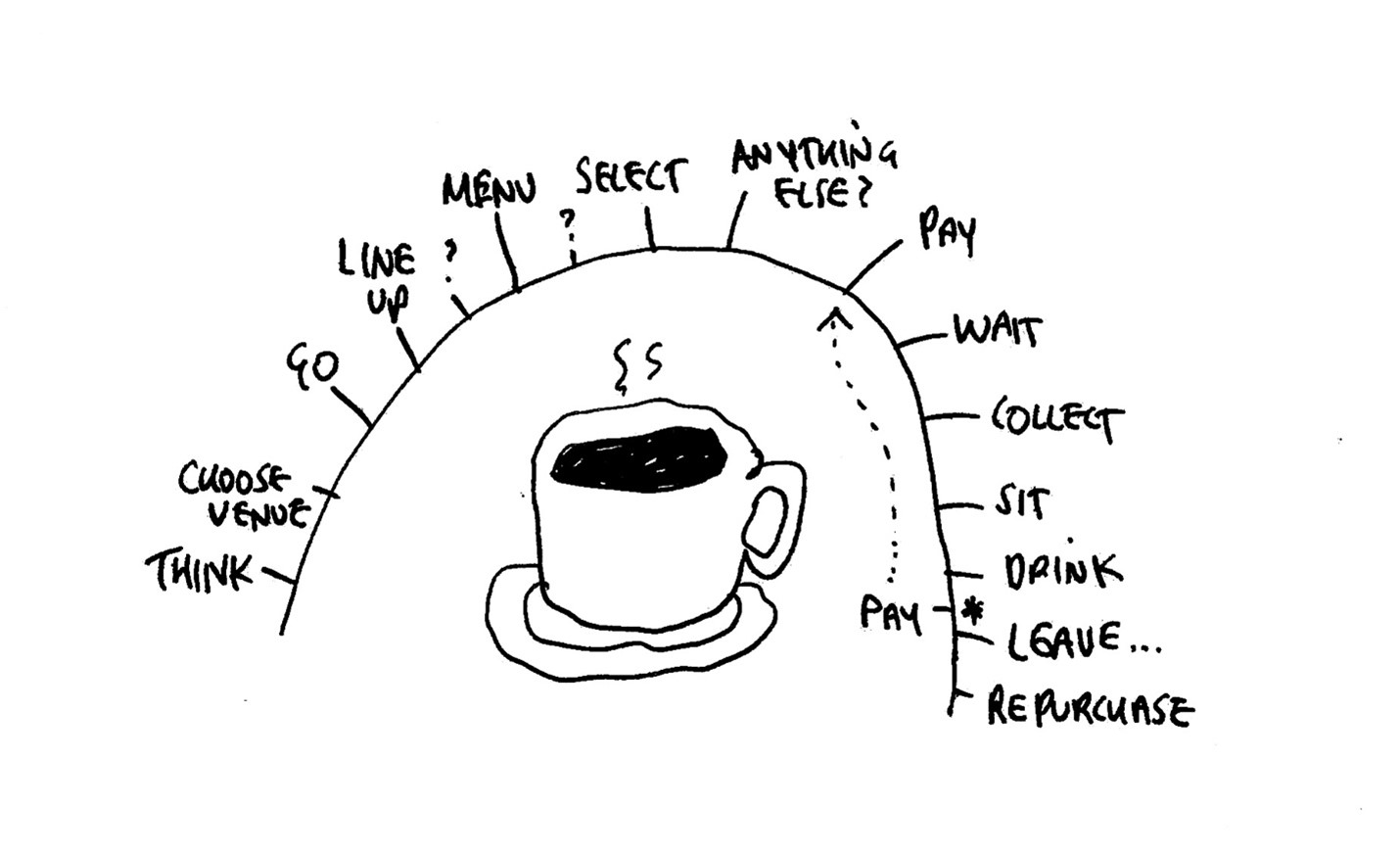If you do anything on a recurring basis and it’s not documented, chances are, it’s costing you a lot of time and money; and you are leaving money on the table. Award winning business coach Andrew Priestley explains why most businesses need training – or a crash course – in writing plain language, recurring, linear business systems and manuals. Whatever you’re doing in your business, you’re doing it somehow, someway.
And whatever you do, there’s an optimum way to do anything. When you do it badly – inefficiently – it costs you time, money, customers and ultimately reputation.
And as a standard, you need to document how you currently do what you do and then make it even better but from your target customer’s perspective.
I mentor teams and a recurring focus is helping clients develop and document recurring, linear, systems by teaching them basic process and customer experience mapping.
I teach them about touch lines and touch points. Entry level stuff like everything above the line is happening to your customer; and everything below the line is what we’re doing to make that happen.
Take something benign like buying a cup of coffee. (On training days, I get my client’s team into small groups and ask them to buy me a cup of coffee. Specifically, walk me through the sale of a coffee, step-by-step.)
It typically goes:
Choose a cafe or go to coffee shop, queue up, look at the menu (latte, mocha or Americano), pay for it, collect it, find a seat, drink it and leave. That’s a walkthrough. But it’s a system and an experience your customer is having.
I’m told, a small coffee shop needs to sell 600 coffees a day to break even; and about 1,200 coffees a day in a bigger store. If you sell $3 coffees, 600 is $1,800; and $3,600 if you sell 1,200. Regardless of the price, there is a breakeven formula.
Coffee shops used to offer pay on leaving and might have anything up to a 30% walk-away of people who didn’t pay for their coffee, especially during busy periods. A 30% loss on $1,800 is $540; on $3,600 that’s $1,080 – either way, a significant chunk of change. A key factor was busy staff forgot to issue a bill.
Now you pay before you collect. Notice the system didn’t change much. The payment moved from the end to the middle of the process, but the result of zero walk aways means no money lost.
Most franchise coffee shops have tweaked the store layout and have taught their guests how – and where – and why – to do everything in an optimum predictable sequence.
Whoever I’m training gets it. They make the connection between mapping a coffee sale… and what they do.
Then I ask: What’s missing? What did you leave out?
Let’s say you finish your coffee, but haven’t finished your conversation. You’re probably going to go back and order another one, right? So, you’re going to line up again and go through that same sequence, again.
I’m training teams to look for loops just like that – repeat sales – and opportunities to encourage a repeat purchase.
Then we explore how we can value-add the order. Why? Because that increases the average order value (AOV) where margins and profitability improve.
And we explore how to make the experience better – memorable, remarkable, fun.
For example, there’s a cafe in San Diego where every single member of the team will give you a warm welcome when you walk in and a fond farewell when you leave.
It’s such a basic, easy and fun value-add to execute, and its free. And customers like it!
They stay longer, talk about it and come back. I’m telling you about it, right now!
The difference between customer service and customer experience is simple: Customer service is about what you get. Customer experience is about what you feel.
The secret is to give your team neutral training experiences before you tackle their roles. A big mistake I see over and over is to start with what they do.
It reinforces that any experience is designed, orchestrated, valued, and done well, is memorable even. Not some random, happy accident.
Staff like delivering feel-good experiences.
The activity of mapping a cup of coffee also works really because it gets your people engaged and thinking like a customer. It teaches you rapidly how to stress test the way you do things. But also, it more easily stress tests the way you do something and flushes out the flaws in the design of the experience your customers are having.
And of course, it signposts a better one.
Here’s the big tick though. Staff like this sort of training; it’s fun, engaging and hands-on. They feel involved and valued. They feel safe to make suggestions especially when the current system is just plain stupid.
I have seen training scenarios where the delegates are too afraid too say anything – especially if it’s a system created by a manager or owner.
Let me wrap up.
Your team are your first line customers. They are having an experience of your company. If it’s flawed then the second line customer – the punter – will get that experience. Most trainings I’ve seen are passive, dull and produce no tangible outcomes. Even compliance training can be designed the way I’ve demonstrated above.
So, what are your takeaways from this article? Understand, I get hired to make my clients more money; in some cases, to turn the money tap back on. That doesn’t happen unless the training engages the team, makes sense and builds on scenarios that everyone can understand, like buy me a coffee.
I set an expectation: if you work here, let’s make it work better. If it matters, make it amazing. Good training should deliver the result sooner.

